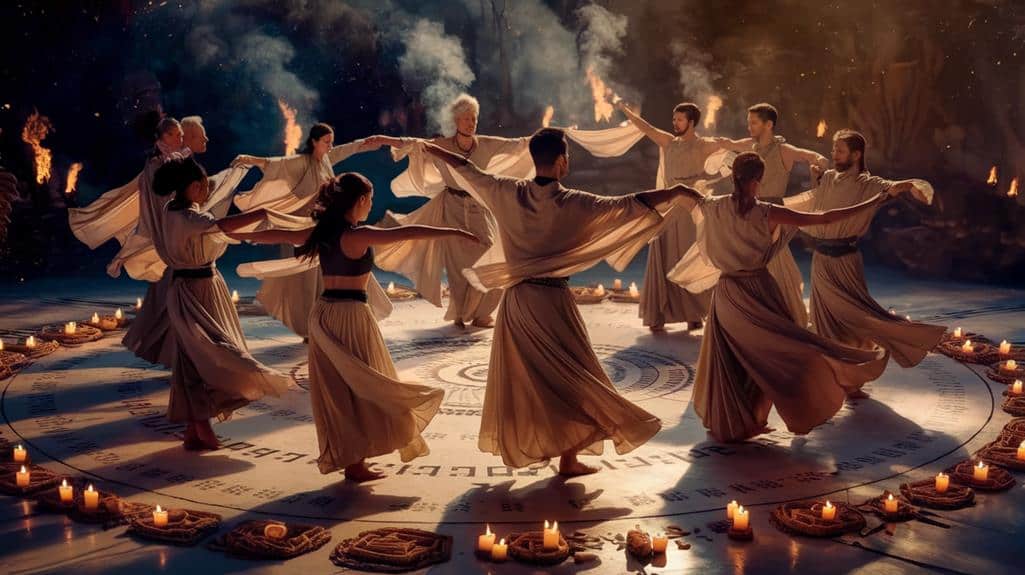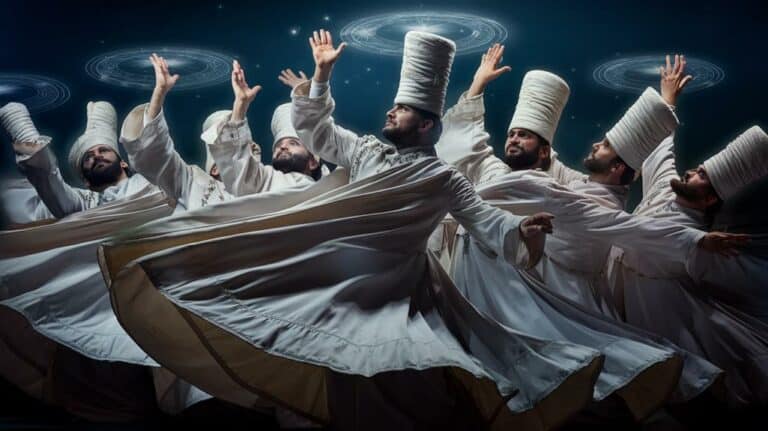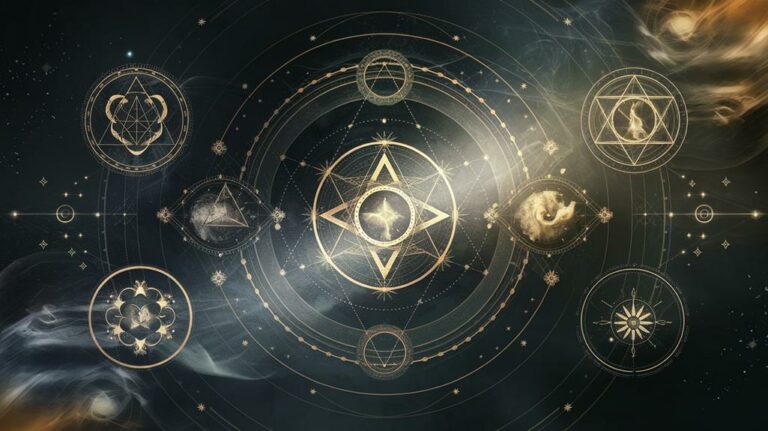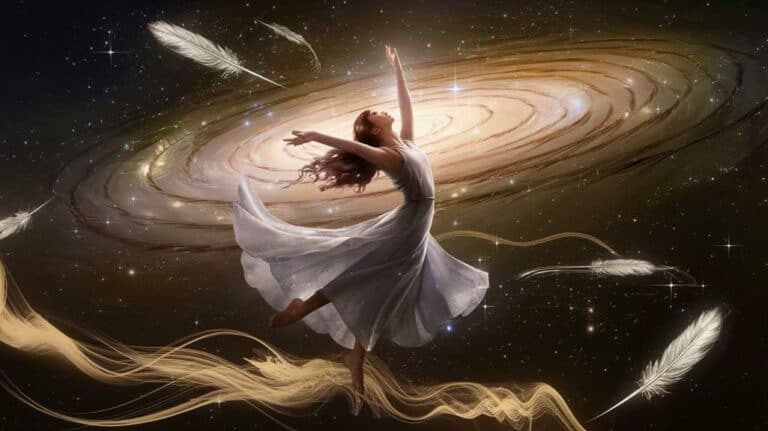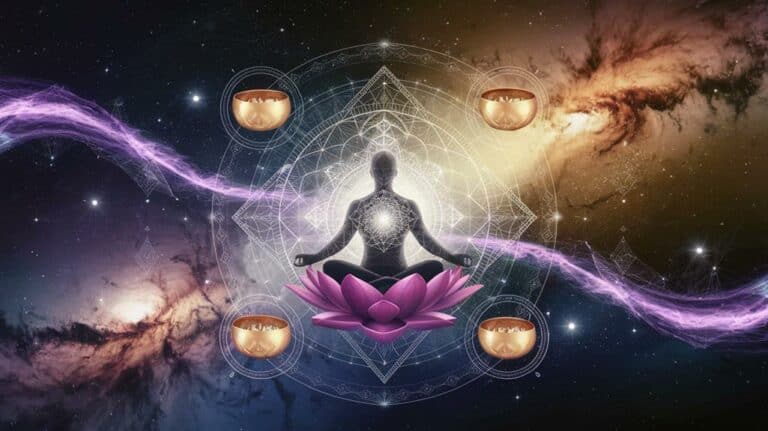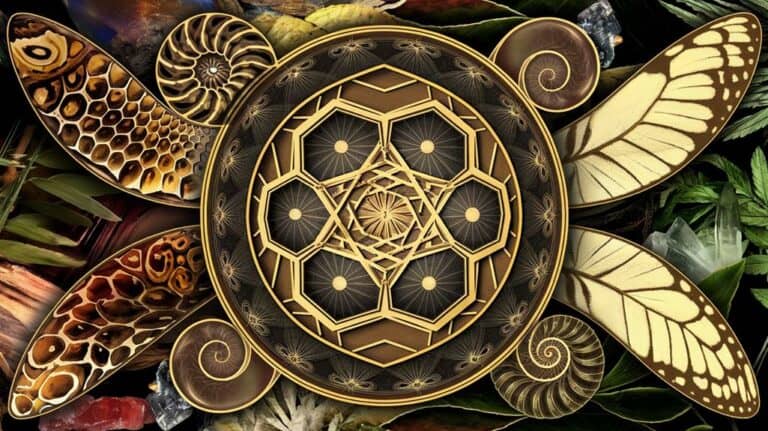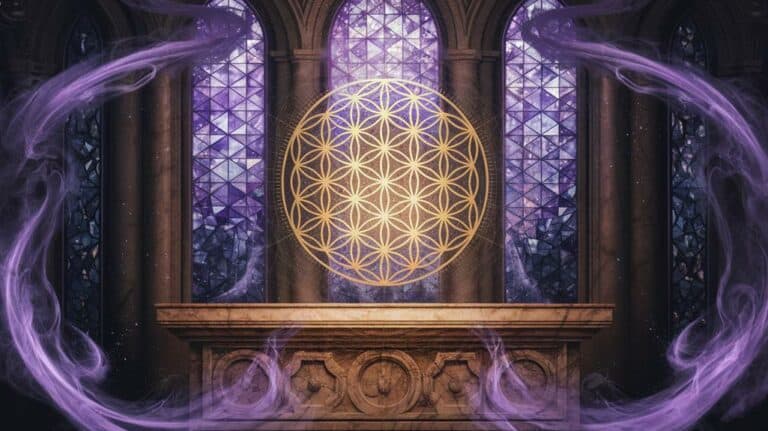10 Sacred Dances From Around the World
You’ll find that sacred dances serve as living bridges between the earthly and divine domains across cultures worldwide. Whether it’s the mesmerizing rotations of Turkish Whirling Dervishes or the powerful stomps of Native American Ghost Dancers, these movements transcend mere performance to become vehicles of spiritual transformation. Each dance carries centuries of wisdom, ritual significance, and cultural heritage within its carefully preserved steps and gestures. From the snow-capped peaks of Tibet to the shores of Hawaii, these sacred traditions continue to captivate both practitioners and observers, offering glimpses into humanity’s timeless quest to connect with something greater than ourselves.
Whirling Dervishes of Turkey
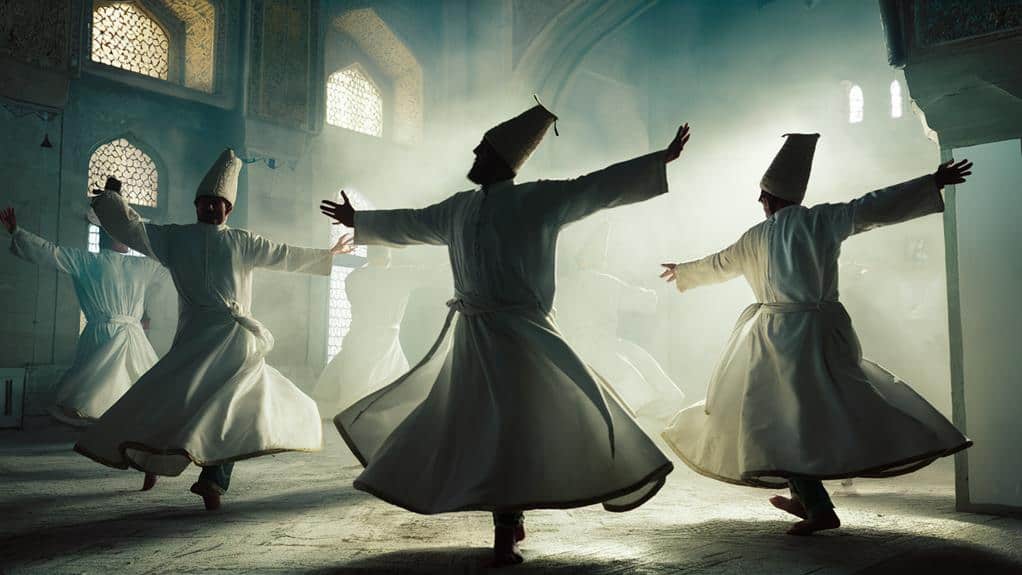
The mesmerizing ritual of the Whirling Dervishes traces back to 13th century Turkey, where Sufi mystic Rumi established this meditative practice as a path to divine connection.
As you witness these devoted dancers spin in their white robes, you’ll observe how they transform into living metaphors of planets orbiting the sun, their movements embodying the cosmic dance of the universe itself.
In this sacred ceremony, known as the Sema, you’ll notice how each dervish removes their black cloak, symbolically shedding their earthly attachments.
With one arm reaching skyward and the other pointing down, they create a channel between heaven and earth. They’ll spin counterclockwise, their skirts billowing into perfect circles, representing the cyclical nature of existence.
You’re watching more than just a dance – you’re witnessing a profound spiritual journey where practitioners seek to transcend their ego and merge with divine love.
Every graceful turn brings the dervishes closer to their spiritual goal, as they whirl in a state of deep meditation, demonstrating how movement can become prayer and dance can lead to transcendence.
Ghost Dance Ceremony
Native American tribes across the western United States took up the Ghost Dance movement in the late 1800s, seeking spiritual renewal and resistance against cultural destruction.
You’ll find that this sacred ceremony, prophesied by the Paiute spiritual leader Wovoka, promised to restore Native lands and bring back deceased ancestors through ritual dance and song.
If you’d witnessed these ceremonies, you would’ve seen dancers moving in a circular pattern, connected hand in hand, performing specific steps while singing sacred songs that spoke of hope and transformation.
The dancers would continue for hours, sometimes days, until many fell into trance-like states where they’d receive visions of a restored world.
You’ll understand the profound significance of the Ghost Dance when you consider how it represented not just spiritual practice, but also peaceful resistance against the devastating policies that threatened Native American ways of life.
While authorities feared and ultimately suppressed this movement, particularly after the tragedy at Wounded Knee, the Ghost Dance remains a powerful symbol of Indigenous resilience and spiritual sovereignty, reminding us of humanity’s enduring quest for cultural preservation and spiritual freedom.
Bharatanatyam Sacred Temple Dance
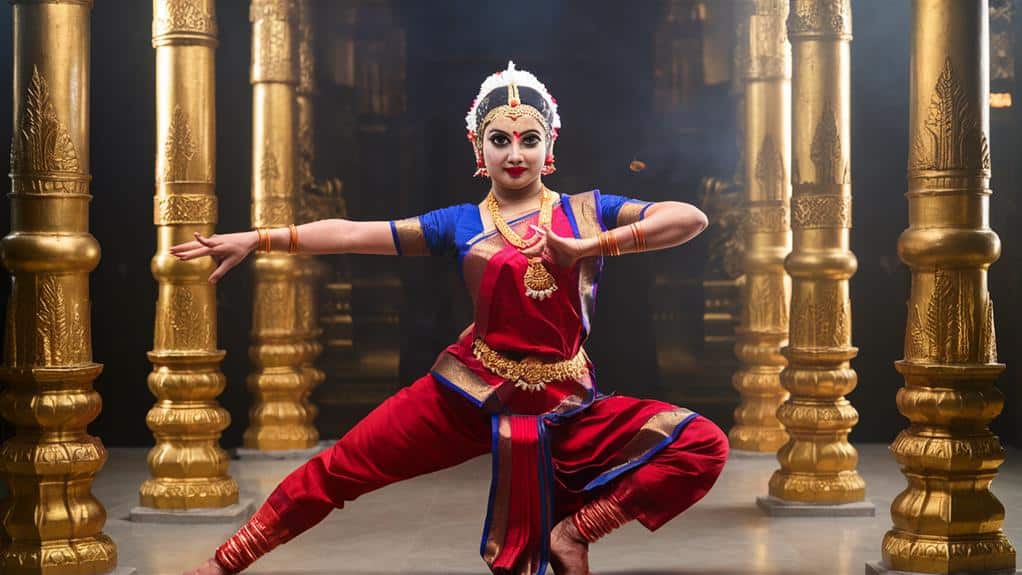
Moving from the American West to South India, you’ll encounter Bharatanatyam, an ancient sacred dance form that originated in Hindu temples over 2,000 years ago. As you witness this intricate dance, you’ll observe how each gesture carries deep spiritual significance, with dancers’ hands forming mudras that speak an ancient language of devotion.
You’ll notice how the dancers’ feet strike precise rhythmic patterns against the floor, their ankles adorned with bells that create a mesmerizing symphony. Their eyes move in specific patterns called drishti, while their faces express navarasas – the nine essential emotions that connect human experience to divine consciousness.
In traditional performances, you’ll find yourself transported to a sacred space where the boundaries between devotee and deity dissolve. The dancers become living embodiments of ancient stories, their bodies transforming into vessels for divine energy.
Through abhinaya (expressive dance), they’ll reveal tales of Krishna’s playfulness, Shiva’s cosmic dance, and Devi’s supreme power. You’re not merely watching a performance; you’re participating in a profound spiritual practice that’s survived centuries of cultural evolution, maintaining its sacred essence while adapting to contemporary understanding.
Tibetan Cham Dance
Deep within Buddhist monasteries, masked monks perform Cham dance rituals to dispel evil forces and celebrate spiritual victory. You’ll witness these sacred performers donning intricate masks and vibrant silk robes as they whirl through carefully choreographed movements that have been preserved for centuries.
Each gesture, spin, and stomp carries profound symbolic meaning, expressing the eternal battle between righteousness and negative forces that exist within your own consciousness.
As you observe the Cham dancers, you’ll notice how they’re channeling divine energies through precise hand mudras and deliberately paced footwork. The dancers transform into wrathful and peaceful deities before your eyes, embodying the very forces that protect dharma teachings.
The penetrating sound of horns, cymbals, and drums guides their movements, creating an otherworldly atmosphere that transcends ordinary reality. You’re not merely watching a performance – you’re participating in a sacred ritual that’s designed to purify negative karma and open pathways to enlightenment.
Through the power of these masked dances, you’ll experience a direct connection to ancient Tibetan wisdom that continues to illuminate paths toward spiritual liberation.
Hawaiian Hula Kahiko
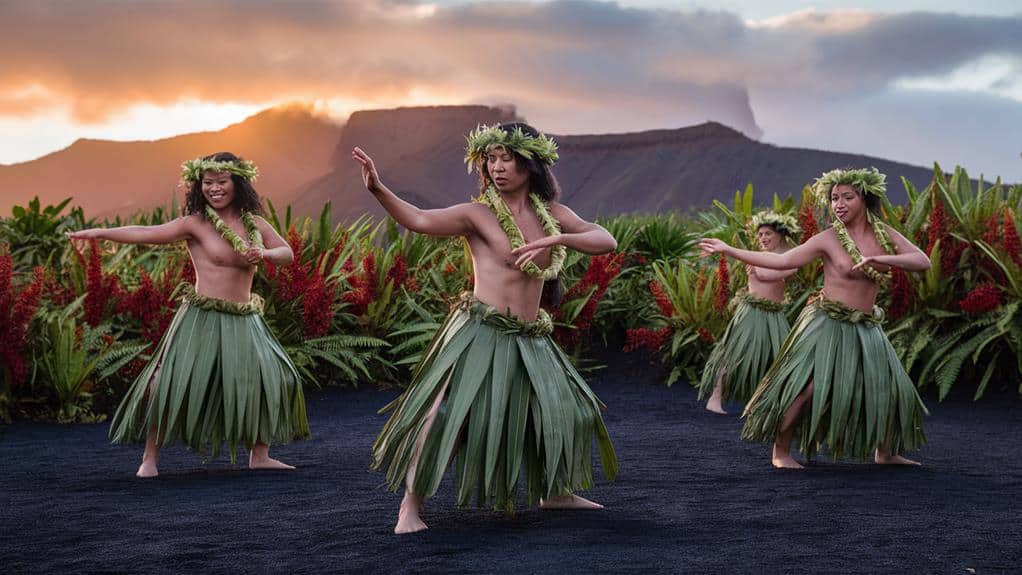
Ancient Hawaiian priests channeled divine power through hula kahiko, a sacred dance predating Western contact. If you’d witnessed this ritual in old Hawaii, you’d have seen how dancers moved in perfect synchronization with the pulsing rhythms of traditional instruments, their movements telling stories of creation, gods, and nature’s raw power.
Through precise hand gestures called ki’i, you’d discover how dancers embody the essence of breaking waves, soaring birds, and swaying palm trees.
You’ll find that hula kahiko isn’t merely a performance but a profound spiritual practice where your body becomes a living prayer. As you explore its depths, you’ll understand how each movement carries ancestral wisdom, connecting you to the earth goddess Pele, the sea god Kanaloa, and countless other Hawaiian deities.
The chants, or oli, that accompany the dance aren’t just lyrics – they’re sacred texts passed down through generations, encoding spiritual knowledge and cultural memory.
When you witness hula kahiko today, you’re experiencing more than dance; you’re participating in an unbroken chain of spiritual transmission that’s survived centuries of cultural change, still carrying its sacred power into our modern world.
African Vodun Dance
Throughout the coastal regions of West Africa, Vodun practitioners engage with spiritual forces through rhythmic dance ceremonies that transform participants into divine vessels. You’ll witness dancers entering profound trance states as drums pulse with ancient rhythms, their bodies becoming conduits for lwa spirits who’ve traversed the cosmic waters between worlds.
When you observe a Vodun ceremony, you’re watching an unfolding ritual where physical and spiritual domains merge through deliberate movements that’ve been passed down through generations. The dancers’ feet strike the earth in patterns that echo the heartbeat of creation, while their arms trace sacred geometries in the air.
You’ll notice how their expressions shift as spirits descend – faces transforming into masks of divine presence. These aren’t mere performances but acts of devotional surrender, where you’ll see dancers shed their everyday identities as they embody celestial forces.
Each movement carries meaning: spinning represents the cyclical nature of existence, while sudden drops to the ground acknowledge the ancestors below. Through these sacred motions, dancers bridge the gap between human consciousness and divine wisdom.
Balinese Sanghyang Trance Dance
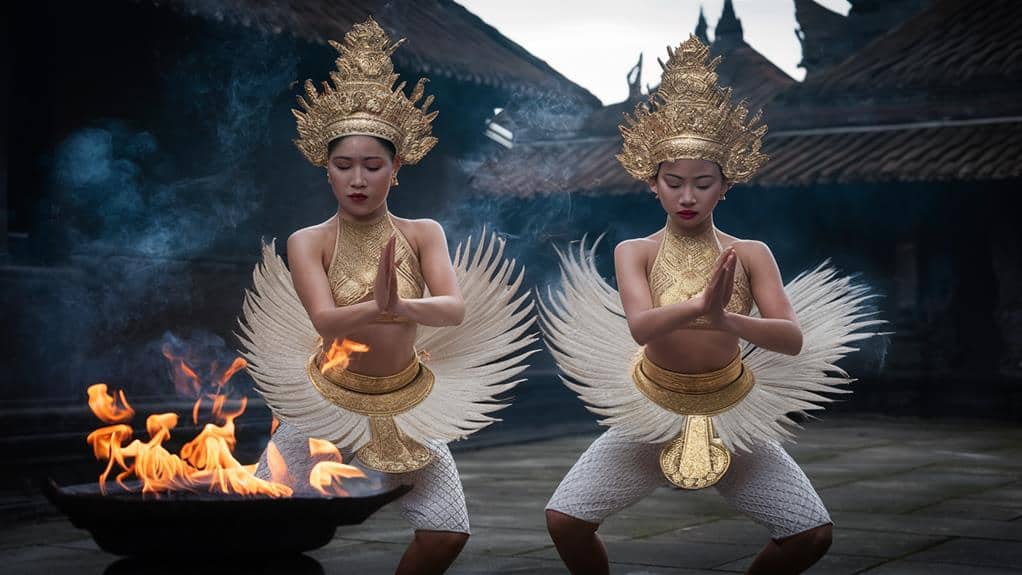
While tourists often flock to Bali’s temples and beaches, the island’s most powerful spiritual practice emerges in the Sanghyang trance dance, where young girls become vessels for divine spirits.
You’ll witness these pre-pubescent dancers, called sanghyang dedari, entering deep meditative states through sacred incense and ancient chants, their consciousness giving way to celestial beings who guide their movements.
As you observe this centuries-old ritual, you’ll notice how the dancers’ eyes remain closed throughout the performance, their bodies swaying to the rhythmic sound of the gamelan orchestra and choir.
They’ll move with otherworldly grace, walking on hot coals or bending backward in impossible positions, demonstrating abilities far beyond their normal capabilities. The community believes these dances ward off illness and misfortune, maintaining cosmic balance within their village.
When the ritual concludes, you’ll see how the priestess gently awakens each dancer by sprinkling holy water and whispering sacred mantras.
The girls will have no memory of their dance, having surrendered completely to the divine forces that moved through them.
Sacred Eagle Dance
Moving from Bali’s spiritual possessions to the American Southwest, the Sacred Eagle Dance stands as one of Native American culture‘s most revered ceremonies. You’ll witness dancers embodying the majestic eagle’s spirit through precise movements that honor both the physical bird and its sacred symbolism, connecting earth to sky in an ancient ritual that’s endured for countless generations.
As you observe the ceremony, you’ll notice how the dancers’ elaborate feathered regalia transforms them into living bridges between the mundane and divine domains. Their arms become wings, their steps echo the eagle’s powerful hunting movements, and their gazes reach toward the heavens in spiritual communion.
You’ll feel the drumbeats resonating with your own heartbeat as the dancers channel the eagle’s medicine, carrying prayers skyward to the Creator.
This isn’t just a performance – it’s a profound act of spiritual transformation where you’re invited to witness the dancers becoming vessels of sacred power. The eagle’s spirit manifests through their movements, reminding you of humanity’s eternal connection to the natural world and the delicate balance between earthly existence and celestial aspirations.
Chinese Dragon Dance
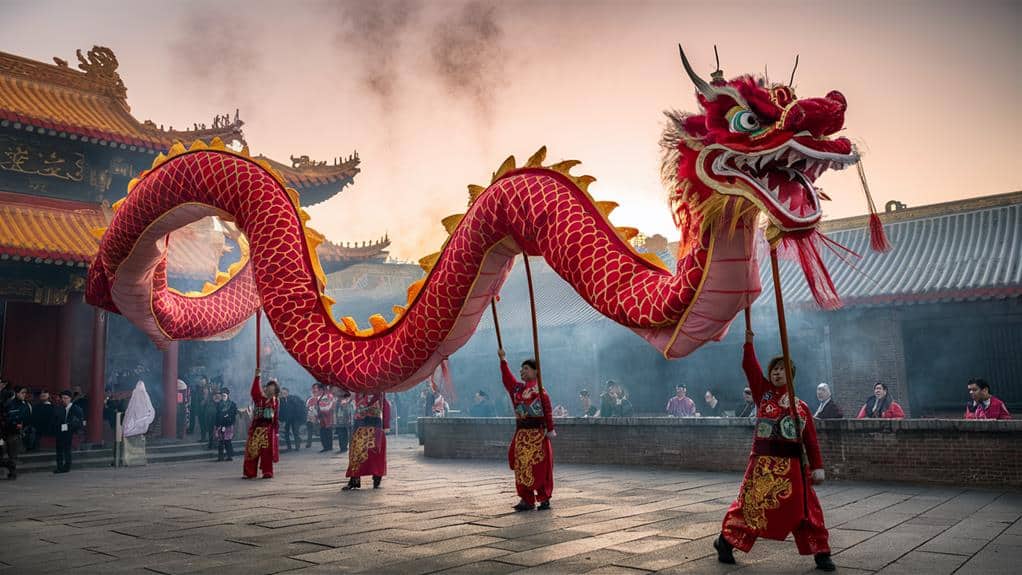
Every Lunar New Year, the Chinese Dragon Dance brings ancient mythology to vibrant life through a spectacular display of coordinated movement and spiritual devotion.
You’ll witness dancers manipulating a long, serpentine form made of bamboo and silk, creating undulating movements that embody the celestial dragon’s power to summon rain, guarantee prosperity, and ward off evil spirits.
As you watch the performance unfold, you’ll notice how the lead dancer holds the dragon’s pearl, representing wisdom and truth, while other performers work in perfect synchronization to create the mythical creature’s fluid motion.
The dragon’s body, typically adorned with scales of red, gold, and silver, ripples through space as if swimming through clouds, demonstrating the deep connection between earthly ritual and heavenly aspirations.
You’re experiencing more than mere entertainment – you’re participating in a sacred tradition that’s endured for over 2,000 years.
The dance transforms public spaces into temporary temples where heaven and earth converge, allowing you to glimpse the divine through human artistry and devotion.
Each movement carries ancient wisdom, inviting you to contemplate your place in the cosmic order.
Gurdjieff Sacred Movements
The sacred dances of the East find a unique expression in the Gurdjieff Movements, a system of precise physical exercises developed by spiritual teacher G.I. Gurdjieff in the early 20th century.
You’ll discover these movements aren’t merely choreographed sequences but rather intentional practices designed to align your body, mind, and emotions in perfect harmony.
When you engage in these sacred movements, you’ll find yourself performing complex gestures and steps that require your complete attention, making it impossible to fall into mechanical patterns of thought or behavior.
The movements challenge you to maintain awareness of multiple body parts simultaneously while following intricate rhythms that often seem to defy natural coordination.
Through this practice, you’re learning to access higher states of consciousness and break free from habitual patterns that keep you sleeping through life.
Each movement serves as a living prayer, incorporating precise arm positions, head angles, and foot patterns that correspond to cosmic laws and universal truths.
You’re not just dancing – you’re participating in what Gurdjieff called “objective art,” where every gesture carries deeper meaning and purpose for inner transformation.



